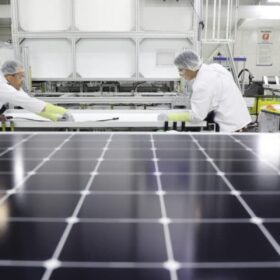Stuck in a loop: The co-adoption dynamics of PV and heat pumps
Scientists in Switzerland have created a system-dynamics model for the adoption of PV and heat pumps in Swiss residential buildings up to 2050. They have examined several scenarios to see how the incentive for PV affects heat pump adoption and the other way around, and they have concluded that strong regulatory changes are necessary to completely decarbonize the residential sector.
Brazil raises solar module import duty from 9.6% to 25%
Brazilian PV association ABSolar says the Brazilian government’s decision to raise the import duty on solar modules from 9.6% to 25% could slow the country’s energy transition and negatively affect ongoing projects.
Maxeon solar panels shipped from Mexico denied entry to U.S.
U.S. Customs and Border Protection blocked Maxeon products despite “having provided clear and objective evidence” of a compliant supply chain.
PowerChina launches 52 GW solar module, inverter tender
PowerChina has launched a 52 GW procurement plan for 2025, which includes solar modules, inverters, and 16 GWh of energy storage systems.
Tata Power unit commissions 126 MW of floating solar in India
Tata Power Renewable Energy has completed a 126 MW floating PV array in Omkareshwar, India. The installation features 213,460 bifacial glass-to-glass modules.
France allocates 948.3 MW in ground-mounted PV tender
The French government has awarded 120 projects at an average price of €0.07928 ($0.0355)/kWh in its latest ground-mounted PV tender.
Solar stocks plummet, market is ‘wildly emotional’ about Trump
Solar stocks have fallen since Donald Trump’s election, but Sunnova CEO John Berger says the market is misjudging the strength of the industry under the new administration.
KRICT sets world record with 20.6% efficiency for large-area perovskite cells
The Korea Research Institute of Chemical Technology (KRICT) has set a world record for power conversion efficiency at 20.6% for large-area perovskite solar cells exceeding 200 cm². The result, confirmed by Germany’s Fraunhofer Institute for Solar Energy Systems ISE (Fraunhofer ISE), marks a significant milestone in solar cell technology.
Australia hits 4 million rooftop PV installations, reaching 25 GW of capacity
Australia has recorded its 4 millionth rooftop solar installation, maintaining its status as a world leader with 25 GW of total capacity, surpassing the amount of nationwide coal generation.
Digital twin for autonomous aerial monitoring of PV power plants
An international research team has created a digital twin that purportedly enables analysis of different scenarios on PV plants’ aerial monitoring. The new tool is claimed to reduce the risk associated with real-world experimentation and help identify the most effective strategies to improve PV system monitoring.










